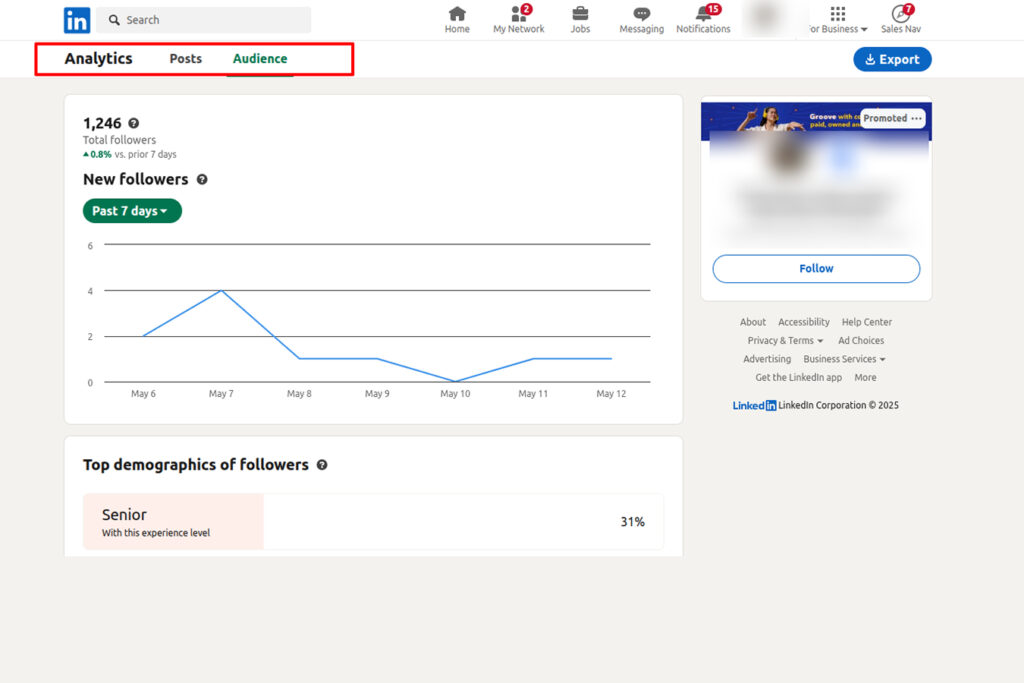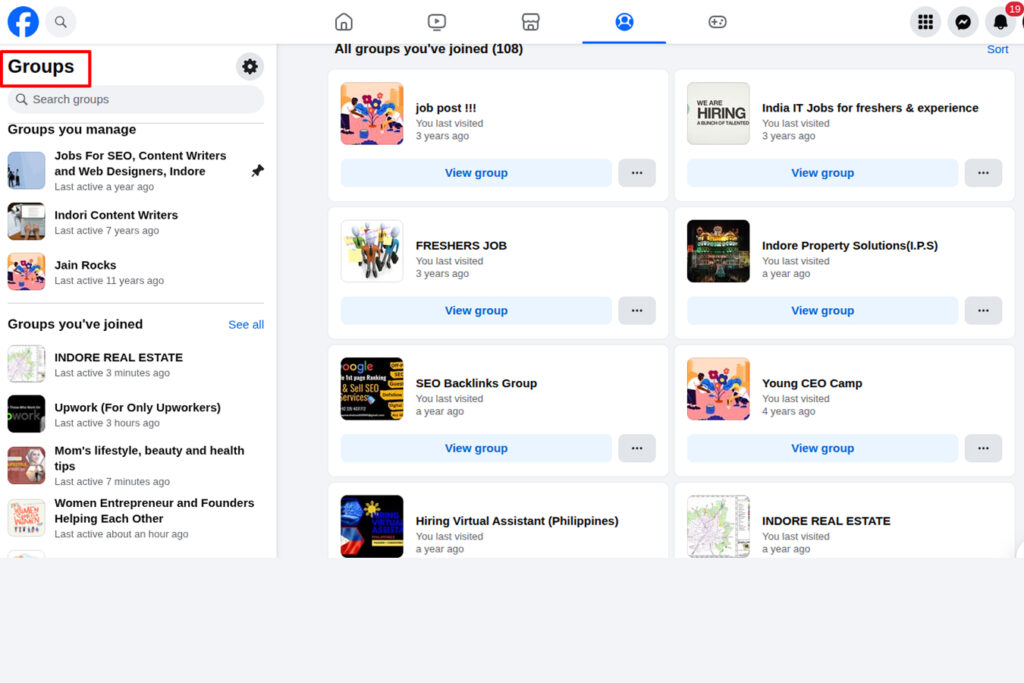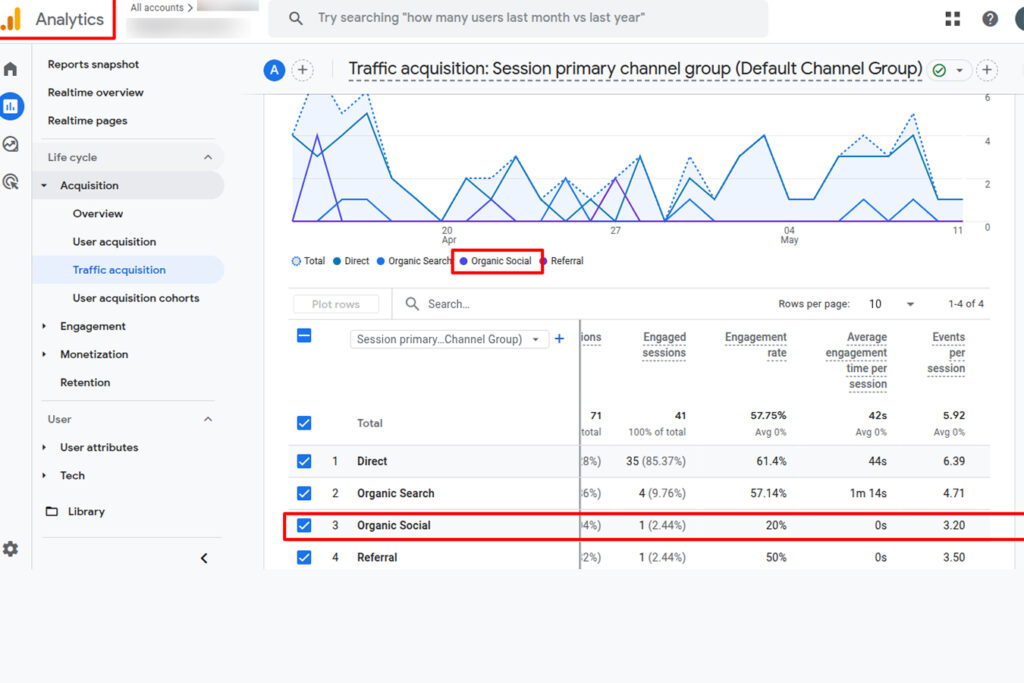
These days, almost every business—big or small—understands the power of social media. Whether it’s about building brand awareness, connecting with customers, or boosting sales, social media marketing has become a key part of a brand’s online success. That’s why the role of a social media marketer is now one of the most in-demand jobs in the world of digital marketing.
But what exactly does a social media marketing job description include? What are the day-to-day responsibilities expected from a social media professional?
What Is a Social Media Marketing Job?
A social media marketing job involves managing a brand’s presence across various social media platforms like Facebook, Instagram, LinkedIn, Twitter, Pinterest, and TikTok. The main goal is to connect with the target audience, build brand awareness, and drive engagement, traffic, or sales through creative and strategic content.
Professionals in this role are responsible for creating and scheduling posts, engaging with followers, analyzing performance metrics, running paid ad campaigns, and staying updated with the latest trends. They often collaborate with content creators, designers, SEO specialists, and marketing managers to ensure consistency in messaging and branding.
In short, a social media marketer is the voice of the brand on social platforms, helping it grow, connect, and thrive in the digital world.

Why Social Media Marketing Job Is Important in Digital Marketing
Social media marketing plays a critical role in digital marketing because it allows brands to connect directly with their target audience in real time. With billions of users actively engaging on platforms like Instagram, Facebook, LinkedIn, and TikTok, social media becomes a powerful channel for building brand awareness, generating leads, driving website traffic, and fostering customer loyalty. A skilled social media marketer doesn’t just post content—they craft meaningful strategies, analyze performance metrics, and create engaging campaigns that support broader marketing goals. In a digital world driven by interaction and visibility, social media marketing is no longer optional—it’s essential for a brand’s growth and competitive edge.
You’ll learn about the 10 key responsibilities typically included in a social media marketing job. If you’re looking to hire someone or thinking of applying yourself, this guide will help you clearly understand what the role involves.
1. Developing a Social Media Strategy That Aligns with Business Goals
One of the core responsibilities of a social media marketer is to design a clear strategy. This means more than just picking which platforms to use—it’s about understanding the brand’s goals (like increasing traffic, generating leads, or building awareness) and creating a social media plan to support those goals. A strong strategy includes audience research, content planning, platform selection, and performance benchmarks.
2. Creating and Curating Relevant, Engaging Content
Content creation is at the heart of social media marketing. A social media marketer is expected to create and curate high-quality content that grabs attention and encourages interaction. This includes written copy, images, short videos, reels, infographics, and even user-generated content. The content must be tailored to each platform and must align with the brand’s tone and values.
Content calendars are often used to organize and schedule posts in advance, ensuring consistency and relevancy across all platforms.
3. Managing Social Media Accounts and Posting Regularly
Day-to-day account management is a major part of the job. This includes handling the brand’s profiles across platforms like Instagram, Facebook, Twitter (X), LinkedIn, Pinterest, TikTok, and others. The marketer is responsible for posting content, maintaining consistent posting schedules, updating profile information, and ensuring brand guidelines are followed across platforms.
Regular activity keeps followers engaged and shows that the brand is active and attentive.
4. Monitoring Analytics and Measuring Performance
Understanding what works and what doesn’t is critical for success in social media. A good social media marketing job description will include tracking key metrics such as engagement rate, impressions, reach, click-through rate, follower growth, and conversion rates. Social media marketers use tools like Meta Business Suite, LinkedIn Analytics, and third-party platforms like Hootsuite, Buffer, or Sprout Social.
By analyzing this data, marketers can adjust their strategies to optimize performance and demonstrate ROI to stakeholders.

5. Managing Paid Advertising Campaigns
In many organizations, social media marketers are also responsible for running paid ad campaigns. This involves creating and managing targeted ads on platforms like Facebook, Instagram, LinkedIn, or Pinterest. Responsibilities include setting budgets, targeting specific audiences, A/B testing, writing ad copy, choosing visuals, and optimizing campaigns for maximum results.
A working knowledge of tools like Meta Ads Manager and Google Ads is often essential.
Benefits of Running Paid Ad Campaigns in Social Media Marketing
1. Reach a Larger, Targeted Audience
Paid ads help you go beyond your organic reach and connect with users who are most likely to be interested in your product or service. With advanced targeting options, you can filter by age, location, interests, behaviors, and more—ensuring your message reaches the right people.
2. Faster Results Compared to Organic Efforts
While organic social media growth takes time, paid campaigns deliver quicker visibility. You can launch an ad today and start getting clicks, traffic, or conversions within hours, making it ideal for time-sensitive promotions.
3. Enhanced Brand Visibility and Awareness
Consistent ad visibility helps boost brand recognition. Even if people don’t click right away, repeated exposure builds trust and keeps your brand top-of-mind for future needs.
4. Drive Website Traffic and Lead Generation
With clickable ads, you can send users directly to your website, landing pages, or product pages. This is especially useful for collecting leads through forms or encouraging purchases.
5. Easy Performance Tracking and Optimization
Paid ads come with built-in analytics. You can see exactly how many people saw your ad, clicked it, or converted. This allows you to refine your ads, pause underperformers, and boost the ones that deliver results.
Common Types of Social Media Ads and Their Benefits
1. Facebook & Instagram Ads
- Purpose: Brand awareness, website traffic, lead generation, or conversions.
- Formats: Image ads, video ads, carousel ads, stories, and reels.
- Benefit: Extremely detailed targeting and wide reach. Facebook’s data helps you reach people based on behaviors, life events, and even past interactions.
2. LinkedIn Ads
- Purpose: B2B lead generation, job recruitment, and brand credibility.
- Formats: Sponsored content, InMail messages, text ads, and dynamic ads.
- Benefit: Great for targeting professionals by job title, company, industry, or skills—ideal for businesses selling to other businesses.
3. Pinterest Ads
- Purpose: Product promotion, brand awareness, and website traffic.
- Formats: Promoted pins, video pins, and carousel ads.
- Benefit: High-intent audience. Pinterest users often browse with the intent to plan or purchase, especially in lifestyle, home, fashion, and beauty niches.
4. Google Ads (Search & Display)
- Purpose: Drive traffic, increase conversions, and appear on search engine results.
- Formats: Text search ads, display banners, shopping ads, YouTube ads.
- Benefit: Captures demand as users search for specific solutions. Great for showing up right when someone is actively looking for what you offer.
6. Engaging with the Online Community
Another important aspect of the job is community engagement. This includes responding to comments, direct messages, mentions, and reviews. It’s not just about answering questions—it’s also about building a relationship with followers and creating a loyal community around the brand.
Timely responses and authentic interactions humanize the brand and show that it cares about its audience.

7. Collaborating with Other Teams
Social media doesn’t work in a vacuum. Social media marketers frequently collaborate with content writers, designers, product teams, SEO specialists, customer service reps, and marketing managers. For example, the product team might provide information about new launches, while the design team creates graphics to promote them.
Effective collaboration ensures that messaging is consistent and that everyone is aligned with campaign goals.
Social media doesn’t work in a vacuum. Social media marketers frequently collaborate with content writers, designers, product teams, SEO specialists, customer service reps, and marketing managers. For example, the product team might provide information about new launches, while the design team creates graphics to promote them.
SEO specialists play a key role by helping ensure that posts are optimized for search visibility and align with trending keywords. This teamwork boosts both reach and ranking.
👉 Looking to boost your brand’s visibility online? Partner with a skilled SEO specialist Shiwali Ratan Mishra to make your social media content search-friendly and impactful.
8. Keeping Up with Platform Updates and Trends
The social media landscape changes rapidly. Algorithms get updated, new features are introduced, and trends evolve weekly. A good social media marketer must stay updated with the latest platform changes, new tools, emerging content styles, and trending hashtags.
This allows them to keep content fresh and ensure the brand remains relevant in a fast-paced digital world.
9. Conducting Competitor Analysis
Social media marketers often need to analyze what competitors are doing. This involves looking at their content strategy, engagement rates, audience interaction, and campaign performance. The goal is to identify opportunities and improve your own social media approach based on competitor strengths and gaps.
Tools like Sprout Social, BuzzSumo, or even simple platform insights help with benchmarking against industry players.

10. Managing Influencer Collaborations and Partnerships
Many brands rely on influencers to boost their online visibility. A social media marketer may be responsible for identifying influencers, reaching out to them, negotiating deals, and managing partnerships. This also includes tracking the performance of these collaborations and ensuring they align with the brand’s image and campaign goals.
Influencer marketing is an increasingly important part of the job, especially in fashion, beauty, travel, and lifestyle industries.
Conclusion: A Dynamic and Impactful Role
As you can see, the role of a social media marketer goes far beyond just posting updates. It requires a strategic mindset, creativity, strong communication, data analysis, and collaboration skills. Whether you’re crafting a job description or applying for the role, understanding these responsibilities helps set clear expectations.
Social media is an ever-evolving space, and those who adapt quickly, stay creative, and connect authentically with audiences will continue to thrive.
Ready to take your social media marketing skills to the next level?
Discover the must-have skills every successful marketer needs to thrive in this fast-paced field.



